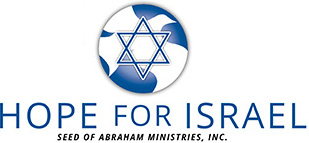בס”ד
Parashiot Tazria and Metzora (She will conceive and a Leper)
Leviticus 12:1- 15:33
Shabbat Erev Rosh Chodesh, Haftarah: I Samuel 20:18-42
This week there are two Torah portions which are read. This Shabbat is also the day before the new month of Iyar (Erev Rosh Chodesh); therefore a special prophetic reading is read. The term “Metzora” refers to one who has leprosy. This parashah reveals that even when the leprosy disappears, the leper is not immediately welcomed back into the community, but there is a very involved process that he must go through which is overseen by a Kohan (priest) (See Leviticus 14:1-32). Although there are many aspects of this process, I would like to focus upon just one of these in this short article— the fact that this ritual takes place at the entrance to the Tent of Meeting (See Leviticus 14:11). This is to emphasize that during the period of leprosy, the leper was not only separated from his family and the entire community (lepers had to live alone or in communities with other lepers), but also from HaShem.
Leprosy was a disease and like all other diseases an outcome of sin. Does this mean that everyone who is sick is in that condition because of some sin that he or she committed? Not necessarily, because sin entered into the world due to the original sin in the Garden of Eden. Therefore, because sin is in the world, sickness is one of the outcomes of this condition. Judaism understands leprosy as uniquely related to pride and speaking in a derogatory manner about another (there is Biblical evidence for this view). Behaviors such as these damage relationships with others and the punishment for this behavior was that one was struck with leprosy, like Miriam for example (See Numbers 12). Because the laws of leprosy were so severe, they emphasized to the leper how serious his sin was, ultimately causing him to have no access to G-d. Now, however, during the purification process from leprosy, the leper performs this ritual standing at the door of the Tent of Meeting. This fact reveals the outcome of healing is not just an end of the disease and the physical and social benefits being restored to him, but first and foremost the restoration of one’s relationship with HaShem.
In speaking about the work of Messiah, healing leprosy is one of the traditional signs that would identify one as the Messiah; hence, not only did Yeshua perform this miracle to reveal His identity as the Messiah, but the healing of leprosy, being associated with the work of Messiah, teaches one what the primary work of Messiah is— to restore man back to the condition he had in the Garden of Eden, when Adam had access to HaShem.
Shabbat Shalom
Share this Post
